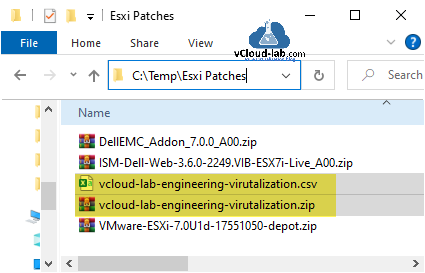

- Dell emc customized vmware esxi 6.7 u3 a02 image install#
- Dell emc customized vmware esxi 6.7 u3 a02 image update#
- Dell emc customized vmware esxi 6.7 u3 a02 image upgrade#
- Dell emc customized vmware esxi 6.7 u3 a02 image password#
Upgrade ESXi host via ISO or Command line may suitable for the infrastructure with less number of ESXi host. Method of upgrading ESXi 6.0 to ESXi 6.5 may depend on the number of the ESXi hosts in the infrastructure.
Dell emc customized vmware esxi 6.7 u3 a02 image update#
There are multiple ways to upgrade ESXi 6.0 to ESXi 6.5 such as direct ISO image, upgrade via CLI (command Line) and upgrade via VMware Update Manager. To make use of new vSphere features available with vSphere 6.5, We need to upgrade the vCenter server 6.0 to vCenter server 6.5 and also Upgrade ESXi 6.0 to ESXi 6.5 along with the Virtual machine hardware upgrade & VMware Tools on the guest operating system. VSphere 6.5 released with excellent new features to improve the security and high availability of critical applications running on the virtual machines.
Dell emc customized vmware esxi 6.7 u3 a02 image password#
Authenticate yourself by entering the same password that you have specified for root during he installation.Press "F2" to enter the system customization menu from the host machine.To manually configure the network interface:

Now, if you have done any configuration it will automatically defaults to DHCP but I don't want that.

The first thing I would do on my first boot is configuring a static IP address which will make the web management interface for that server much easier to reach on my internal network. Network Configuration for Management Interface Please make sure to remove your installation media after it finishes, it will ask you to do so anyway before rebooting the system.
Dell emc customized vmware esxi 6.7 u3 a02 image install#
What is important is that when it asks you Select a Disk to install or upgrade please make sure to choose the internal USB drive or whatever else you want to put the hypervisor on.Īfter that, it will ask you about your preferred "Keyboard Layout" configuration and then you will be presented with a dialog to set your root password which will be used mainly to enter the management interface, that's all. Well, nothing too fancy here when you get into the installation screen just follow the dialogs and accept the terms and conditions. There you are, now ESXi is supposedly loading the installer.


 0 kommentar(er)
0 kommentar(er)
